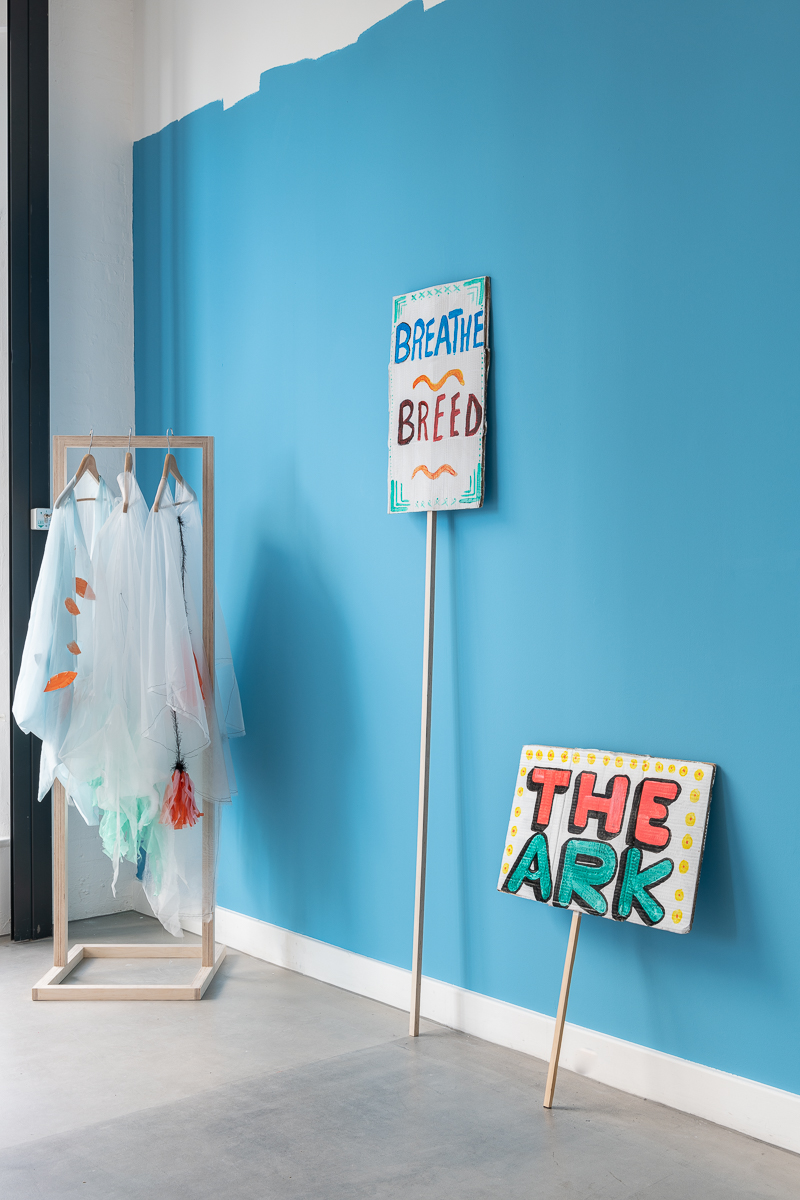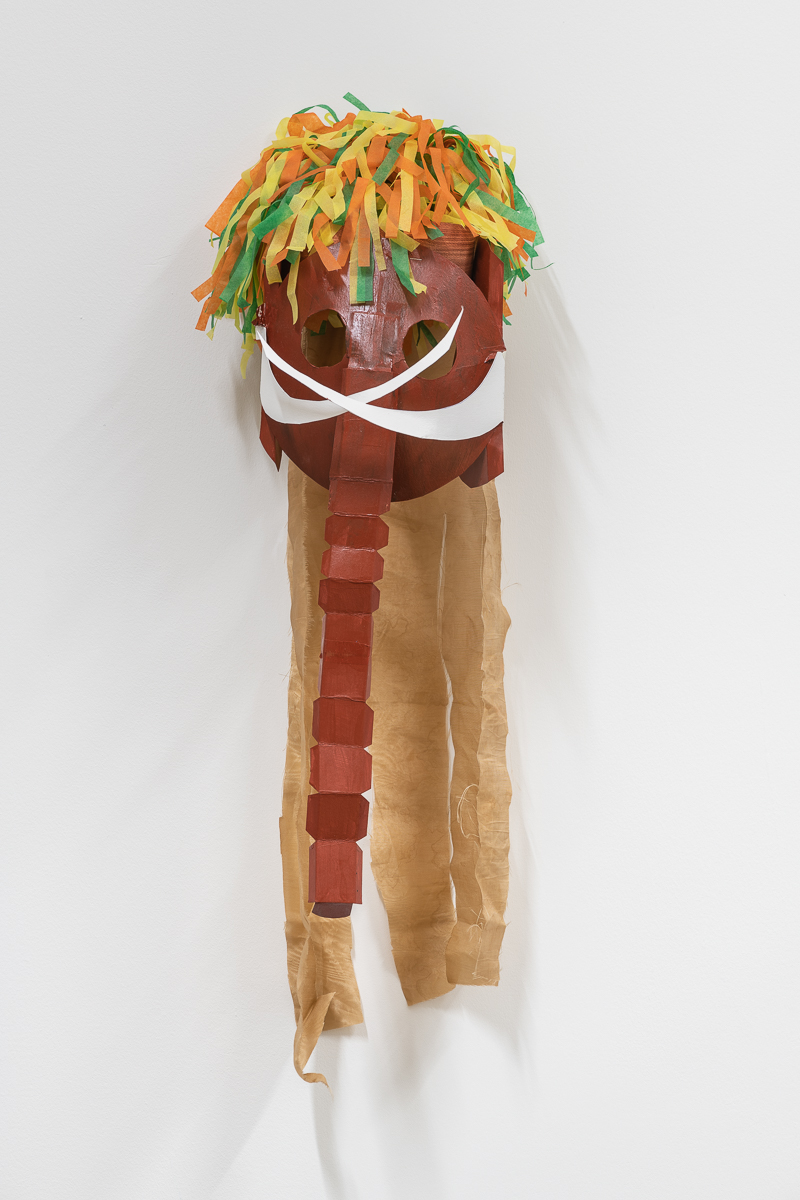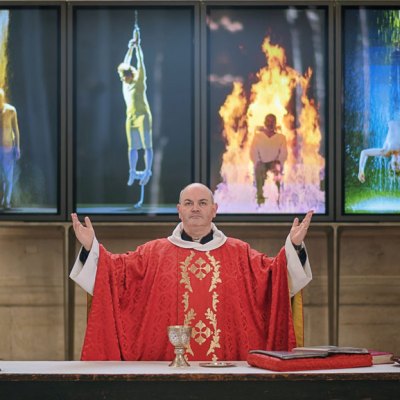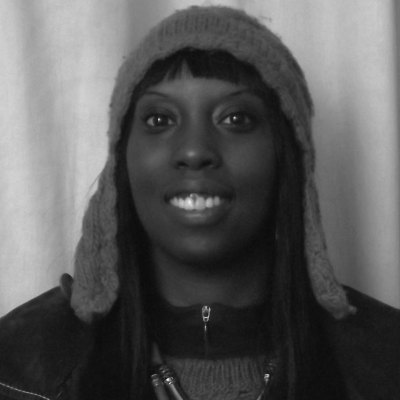In 2012, Grace Ndiritu gave up the lease on her London flat, packed all that she thought she might need into two suitcases, and set off to live at a Buddhist centre near Gloucester. She has never looked back, moving itinerantly between alternative communities as disparate as the Findhorn Ecovillage in the Scottish Highlands, a Hare Krishna ashram in India, and Buddhist monasteries in Thailand and Tibet. Throughout, she has determined only to set foot in urban environments when compelled by necessity.
Grace Ndiritu at Paris Fashion Week 2016

To begin with, that was her only motive. Though she had been a practising artist for more than a decade, Ndiritu never conceived of these travels as research, or ‘artist’s residencies’. She kept a record of her experiences, but never with an exhibition or any other ‘end-goal’ in mind. ‘I wanted to do exactly the same jobs, to eat the same food as everyone else in the community,’ she tells me. Her art-making, which began with textiles but has since come to incorporate performance, photography, and painting, was to remain separate from her spiritual enquiries. That changed in 2014, when Ndiritu began to formulate the idea of ‘making a community – so that the community itself was the artwork’.
Meeting the artist at the Freelands Foundation in Primrose Hill, London, I encounter the relics of just such a community: a placard emblazoned with the slogan ‘Breath/Breed’; an elephant’s head, constructed out of coloured card, hung on the wall, reminiscent at once of an anthropological exhibit and children’s craft. They were made by participants of The Ark (2017) – an ‘experiential laboratory’, which brought a motley group of scientists, artists and academics to Les Laboratoires, an art centre in the neglected Parisian suburb of Aubervilliers, for a week of discussions on topics that ranged from shamanism to activism to plant biology.
The participants were also, unawares, the subjects of an experiment. Ndiritu wanted to explore the reasons that leaderless protest movements such as Occupy have fallen flat. Accordingly, each day, before the programme of shamanic meditations and academic discussions was underway, each participant was asked to choose a badge. One read ‘charismatic cult leader’; the other, ‘working together for a plant-based future’. To begin with, everyone – eager to present themselves as affable, and ‘cooperative’, went for the latter – but by the end of the week, cult leaders were cropping up in the workshop, while others hedged their bets, and wore both badges. There were other surprises in store for Ndiritu – the rational-minded scientists had less trouble sloughing off their self-awareness, and engaging with the spirit of the project, than the artists, who would second-guess themselves, hamstrung by firmer notions of what art is and what their role should be. ‘It’s a project that’s really about individual and group dynamics,’ Ndiritu says. ‘How can you protect your own space, but also remain connected to people? […] How can you strike a balance between consensus and hierarchy?’
‘The Coming Community’, installation view, Freelands Foundation, London, 2019. Photo: Damian Griffiths; courtesy Freelands Foundation

In seeking that balance, Ndiritu has looked to a range of influences; she talks to me of Native American concepts about the health of the body politic – overrun, lately, by the ‘virus of capitalism’. But she also discusses the early influence of Land Art, and the ways that artists such as Robert Smithson were redefining the boundaries between inside and outside – between institutions like museums and the world they are supposed to represent. In this, The Ark enlarges on the artist’s previous forays into institutional critique; since 2012, Ndiritu has run a series of workshops, exploring the central idea of her essay of that year, ‘Healing the Museum’. ‘Museums are dying,’ she explains, ‘and they need new energy’ – in the form of ‘meditation, shamanism – things that reconnect them with the outside world.’
But above all, it seems to me that the contradictions at play in The Ark are a reflection of its creator. From a young age, Ndirutu tells me, she felt that ‘I had a kind of double life […] My family is from rural Kenya, but I grew up in Birmingham, and as a teenager I felt I had to choose between Africa and England.’ She was introduced early to New Age ideas by her mother – ‘a feminist, activist, kind of a hippie.’ Though she has grown suspicious of certain kinds of New Age-ism – because ‘generally, the Western form is about “what can I get out of this?”, rather than the selflessness of real spirituality’ – she remains interested in the way that Western, supposedly more ‘rational’ cultures, harbour an enduring fascination with spiritual ways of thinking. ‘I found that I needed to find a way to transcend the two – to have both [the rational and the spiritual]. And it wasn’t just about accommodating them – it was about inventing something new out of them.’
‘The Coming Community’, installation view, Freelands Foundation, London, 2019. Photo: Damian Griffiths; courtesy Freelands Foundation

At the close of the week, The Ark was opened up to the public, in a kind of collaborative ‘happening’. ‘We decided upon a group protest – protest is a great way to be both political and playful.’ So, dressed in the masks of elephants and dogs that they had made, the conference-group of scientists and artists marched out into the streets of Aubervilliers, ‘stopping the traffic. When we went into the park, kids were following us, crying because they thought we were real animals.’ Hours later, when they marched back to their ark, the animals were followed by a group of locals, who joined them for a barbecue.
I ask Ndiritu if she was at any stage afraid of what might happen when her small, invented community came face-to-face with the reality of the city. ‘No – because I have real faith in people. People have always told me I’m naive – but I’ve never understand how that’s an insult. You have to have some sort of faith in people.’
‘The Coming Community’, which brings together work by Grace Ndiritu, Andrea Zittel and the Karrabing Film Collective, is at the Freelands Foundation, London, until 12 January 2020.



